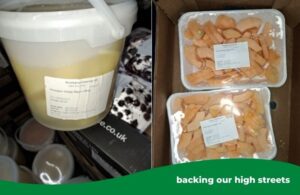The school run is could provide a perfect opportunity for children to learn about their local area, develop wider social networks and gain independence.
What’s more social distancing rules still in place, it is vital people find alternatives to public transport wherever possible to reduce the spread of COVID-19 and support the NHS.
Nationally, the average primary school journey is just 1.6 miles, and yet one in four cars on the road during the morning peak are doing the school run.
Encouraging children to walk, cycle and scoot plays a role in reducing congestion and air pollution around the school gates and is also great for children’s mental and physical health.Teachers find that pupils who walk and cycle arrive at school more relaxed, alert and ready to start the day than those who travel by car.
Walking to school is easy, free and good for a child’s health. It helps them to engage with their local community, develop wider social networks, greater spatial awareness and improved road sense.
Cycling to school helps young people to develop road safety skills and learn how to manage risk gradually. As children gain the skills they need to stay safe, they can develop independence; discovering strategies and solutions for getting about themselves.
Of course, an adult can always accompany younger children and help older ones get used to their route until they’re ready to go it alone.
Much like cycling, scooting helps young people develop road safety skills and to gain independence enabling them at some stage to be able to travel by themselves. It is also great fun, encourages exercise from a young age and adults can so take part as well.
Safety is of course vital and while not compulsory for cycling and scooting, wearing a helmet is recommended.
Julian Bell, Leader the council said: “It is vital that in this particularly difficult time, we support residents to walk and cycle wherever possible and this includes on the school run, as our schools reopen in the coming weeks.
“We need to take the pressure off the public transport system and reduce the spread of COVID-19 – but getting out of the car and on to a bike or scooter is also beneficial for all people of all ages.
“It helps to reduce air pollution and traffic congestion – in fact recent data has shown that during lockdown, when traffic has dropped significantly, we have seen an average reduction of around 25% in nitrogen dioxide levels, and almost 5% in the levels of particulates across monitored sites in the borough.
“We will continue to invest in cycling to provide local people with a sustainable alternative of getting on two wheels, rather than getting behind the wheel.
Top tips to get your child walking, cycling or scooting to school:
- Plan your route together in advance, finding quieter roads and cycle paths wherever possible.
- Practise the journey at the weekend when the roads are likely to be quieter.
- Accompany your child for a few days. As they gain confidence, gradually reduce how far you go.
- Make sure they know how to deal with any busier junctions or roads by following our cycling safety tips.
- Encourage them to find a friend to walk or cycle with them.
- If your child is cycling then cycle training can be a great way to help them develop skills and increase their confidence on the roads.
The council is introducing a range of measures across the borough to help residents engage with walking and cycling. This includes working with schools to install colourful two-metre footway markings outside school gates to help facilitate social distancing.
The Sustrans website also has information and advice for cycling and the school run. You can also use the site to plan a cycling route.
The council is working to address the climate and ecological emergency and increasing their walking and cycling are key actions that residents can take to make a difference.





